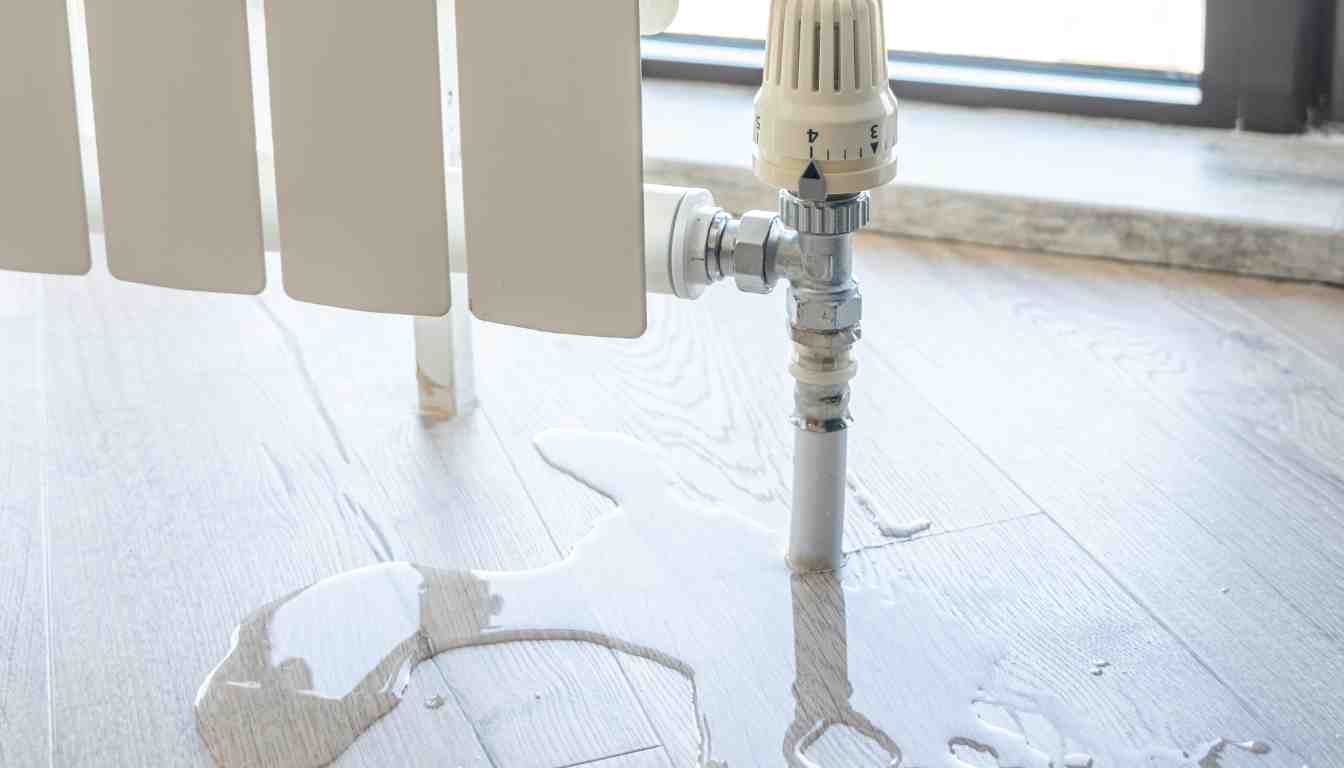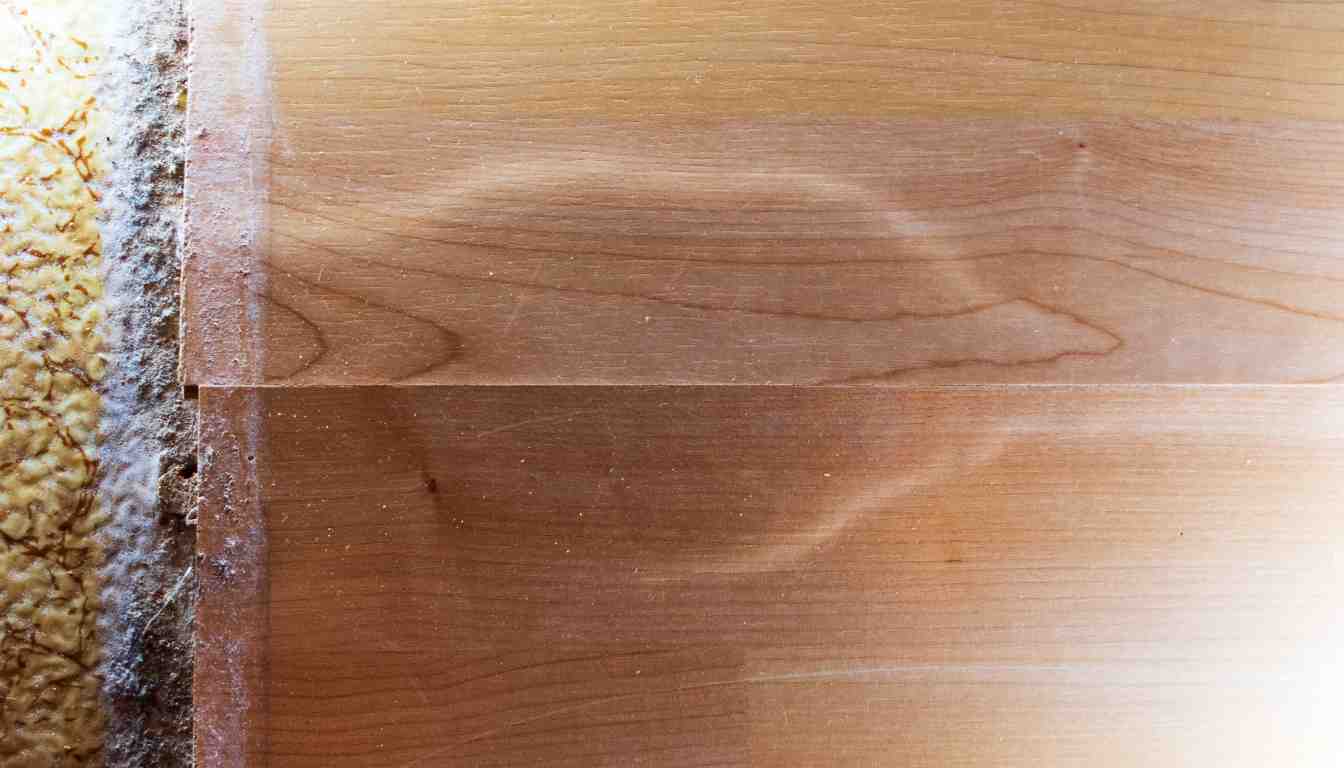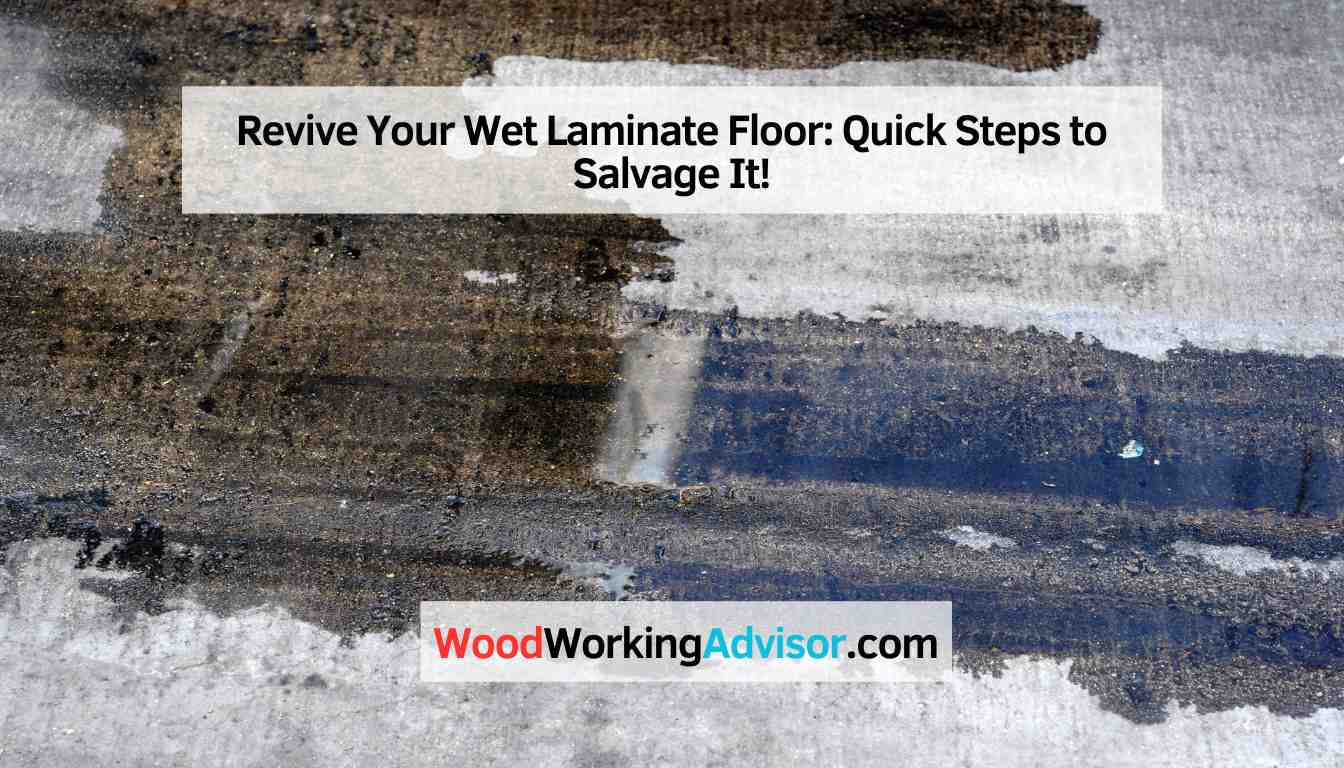When laminate floor gets wet, immediately dry it thoroughly with towels and ventilation to prevent damage. Water can cause swelling and warping, leading to costly repairs or replacements.
Acting promptly is crucial to salvage your floor and retain its integrity. Ignoring water damage can result in mold growth and structural issues. We will discuss effective steps to take when a laminate floor gets wet, guiding you on how to prevent further damage and ensure the longevity of your flooring.
By following these simple yet essential tips, you can protect your laminate floor investment and keep your space looking pristine.
Identifying The Issue
Recognizing Water Damage
Flooding or spills may cause laminate flooring to warp, swell, or discolor.
Assessing The Severity Of The Damage
Look for signs like buckling or cupping, which indicate water penetration.

Immediate Actions
When dealing with a wet laminate floor, taking immediate actions is crucial to prevent damage.
Removing Excess Water
Use towels or mop to absorb excess water from the floor. Avoid leaving standing water.
Drying The Floor Surface
Allow the floor to air dry naturally or use fans and dehumidifiers to speed up the drying process.
Dealing With Warping And Buckling
When laminate flooring gets wet, it can lead to warping and buckling, disrupting the appearance and stability of your floors. Dealing with warping and buckling promptly is crucial to prevent further damage and restore the integrity of your laminate flooring.
Using Dehumidifiers
Introducing a dehumidifier into the affected area can help remove excess moisture from the air and the laminate flooring. Position the dehumidifier in the room and allow it to run until the moisture levels have significantly decreased.
Repairing Or Replacing Damaged Sections
If warping and buckling have occurred, it may be necessary to repair or replace the damaged sections of the laminate flooring. To repair, begin by removing the damaged sections, then clean and dry the subfloor before installing replacements to restore the uniformity of the flooring surface.
Preventing Mold And Mildew
When laminate flooring gets wet, it’s crucial to take immediate action to prevent mold and mildew growth. Start by thoroughly drying the affected area and using a dehumidifier to remove excess moisture. If the damage is extensive, it’s best to consult a professional to ensure thorough remediation and prevent further issues.
Mold and mildew are common problems that can arise when laminate floors get wet. These moisture-induced issues not only compromise the aesthetics of your flooring but also pose health risks. To prevent mold and mildew from taking hold, there are several measures you can take. One effective method is to apply anti-microbial treatments to your laminate floor. These treatments not only inhibit the growth of mold and mildew but also prevent the spread of bacteria and other harmful microorganisms.
Applying anti-microbial treatments to your laminate floor is a straightforward process. First, make sure the floor is thoroughly dry and clean. Then, carefully follow the instructions provided by the anti-microbial product manufacturer. Generally, you will need to spray or apply the treatment evenly across the entire surface of the laminate floor. Be sure to distribute the product evenly, paying extra attention to areas prone to moisture accumulation, such as bathrooms or kitchens.
Another important step in preventing mold and mildew is ensuring proper ventilation throughout your home. Proper ventilation helps to circulate air and remove excess moisture, which can significantly reduce the risk of mold and mildew growth. Here are a few simple ways to improve ventilation in your home:
1. Open windows and doors whenever possible to allow fresh air to flow in and stale air to escape.
2. Use exhaust fans or vents in high-moisture areas like bathrooms or kitchens to remove humid air.
3. Consider using a dehumidifier in areas with persistent moisture problems.
By incorporating these ventilation practices into your daily routine, you can create an environment that is less conducive to mold and mildew growth. Remember that prevention is key when it comes to mold and mildew, and taking proactive steps to address moisture issues is crucial.
In conclusion, preventing mold and mildew on laminate floors is attainable by applying anti-microbial treatments and ensuring proper ventilation. These measures not only help preserve the condition of your flooring but also promote a healthier living environment. By following these simple steps, you can keep your laminate floor looking great and free from harmful mold and mildew. Remember to consult with professionals or refer to product instructions whenever necessary to ensure you are taking the appropriate steps to prevent mold and mildew.
Long-term Maintenance
Long-term maintenance is crucial to ensuring the longevity and durability of your laminate flooring. By implementing preventive measures and regularly inspecting and caring for your floors, you can prevent water damage and maintain their pristine condition for years to come.
Implementing Preventive Measures
Preventing water damage should be your first line of defense when it comes to maintaining your laminate flooring. Here are some preventive measures you can take:
- Place doormats at all entryways to trap dirt and moisture that can be brought in from outside. This helps prevent water from seeping into the laminate floor.
- Avoid using excessive water when cleaning your laminate floors. Instead, use a slightly damp mop or a laminate floor cleaner specifically designed for laminate surfaces.
- Consider using area rugs in high-traffic areas or areas prone to spills, such as the kitchen or dining room. These rugs can provide an extra layer of protection against water damage.
- Ensure that any spills or accidents are promptly cleaned up to prevent water from seeping into the laminate floor. Use a soft, absorbent cloth or paper towel to soak up the liquid without rubbing or scrubbing the floor.
- Regularly check the condition of your plumbing fixtures, such as faucets, pipes, and toilets. Leaks can go unnoticed and cause gradual water damage to your laminate floors over time.
Regular Inspection And Care
In addition to preventive measures, regular inspection and care are essential for preserving the condition of your laminate flooring. Here are some tips:
- Inspect your laminate floors regularly for any signs of water damage, such as discoloration, warping, or swelling. Address any issues immediately to prevent further damage and potential mold growth.
- Regularly sweep, vacuum, or dry mop your laminate floors to remove dirt, dust, and debris. This helps minimize the risk of scratching or damaging the surface of the floor.
- Use furniture pads or felt protectors under the legs of your furniture to prevent them from scratching or denting the laminate floor. Avoid dragging heavy furniture across the floor.
- Keep the humidity levels in your home within the recommended range for laminate flooring. Excessive humidity can cause the laminate to expand and potentially lead to water damage.
- Consider using a laminate floor polish or protective coating to enhance the shine and protect the surface of your laminate floors. Follow the manufacturer’s instructions for application.
By implementing preventive measures and regularly inspecting and caring for your laminate floors, you can ensure their longevity and keep them looking beautiful for years to come. Remember to address any water damage issues promptly and consult a professional if necessary to prevent further damage.

Frequently Asked Questions Of What To Do When Laminate Floor Gets Wet
Is Laminate Flooring Ruined If It Gets Wet?
Yes, laminate flooring is often ruined when it gets wet as it can lead to warping and mold growth.
How Do You Fix Water Damaged Laminate Flooring?
To fix water damaged laminate flooring, first, identify the source of the water. Dry the affected area thoroughly with a fan or dehumidifier. Replace any irreparably damaged planks and ensure the subfloor is completely dry before reinstalling new laminate pieces.
How Long Does It Take For Water To Damage Laminate?
Water can damage laminate in as little as 24 to 48 hours, depending on the amount and exposure. It’s important to promptly address any water spills or leaks to prevent laminate damage. Regular maintenance and quick cleanup can help protect your laminate from water damage.
Can Mold Grow Under Laminate Flooring?
Yes, mold can grow under laminate flooring if there is excess moisture or a water leak. It is important to address any water issues promptly to prevent mold growth. Keeping the floor clean and dry can also help prevent mold.
Conclusion
Knowing how to handle a wet laminate floor is crucial for preventing serious damage. By promptly addressing spills and leaks, utilizing proper cleaning techniques, and maintaining good ventilation, you can keep your laminate floor in top condition. With these tips, you can effectively handle any wetness and preserve the beauty and functionality of your laminate flooring for years to come.


